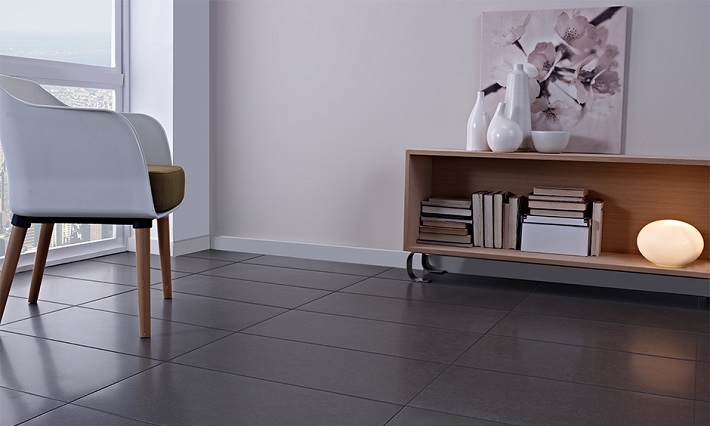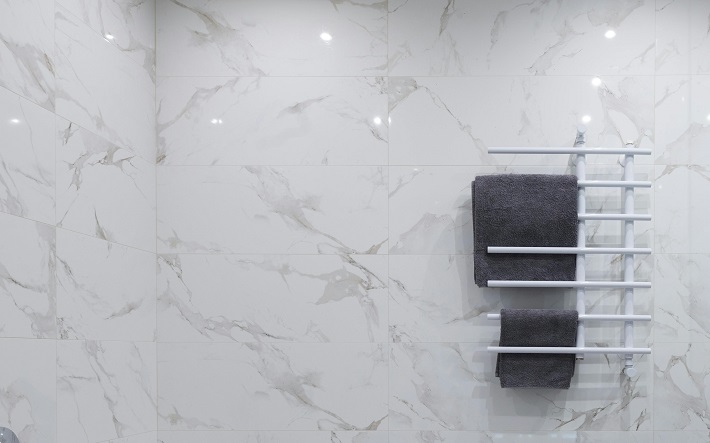Everyone loves creating exquisite spaces that express their individuality and offer a sense of ownership. The walls and floors of the house are important components of your design, so whether the space is inside or outside, we all need to pay attention to them.
Tiles are often a favoured choice for both residential and commercial buildings. Whether you’re flooring, re-flooring a space, or tiling your bathroom walls, you can choose from a vast range of materials, colours, textures, and designs. Nevertheless, only one of these is right in certain situations.
How to Choose the Right Tiles for Your Home?
Size, finish, design and cost are significant factors when choosing the right tiles for your home. However, the tile type, or the material tiles are made of is essential too. Here’s a breakdown of the most popular types, their advantages and disadvantages, and suggestions for the rooms they’re ideal for.
Ceramic

The thin slabs of clay, water, or other inorganic ingredients that make up ceramic tiles are fired at high temperatures to solidify them, and they’re typically covered in a glaze. The main advantages of ceramic over genuine stone are its affordability and longevity.
When searching for stylish and durable ceramic tiles for sale, you’ll come upon an extensive array of hues and patterns for a sleek appearance and various uses. For example, glazing produces a surface resembling glass and allows greater colour. And, tiles are available in almost every shape and size, ranging from little mosaics to big formats.
Ceramic tile is a good option for walls, floors, countertops, and backsplashes in different home areas. It’s stain- and moisture-resistant and doesn’t absorb germs or smells. It’s an excellent flooring option for places that tend to get hot during the warmer months because it often feels cold. The PEI rating is one important factor to consider when looking for ceramic tiles for sale.
The Porcelain Enamel Institute made this rating framework, a reliable marker accessible to clients to decide on wear desires for a certain tile application. Ceramic tile has a hardness rating of 0 to 5 on the PEI scale, which assesses the toughness and hardness of tile materials. A rating of 3 is appropriate for domestic purposes, and 0-2 is acceptable for wall tiles.
Porcelain
Making porcelain tile often involves firing clay at a very high temperature, producing a smooth, fine-grained, dense, and waterproof tile. Generally speaking, porcelain tiles are more frost-resistant—though not frost-proof—than ceramic tiles because of their significantly lower water absorption rate.
Because glazed porcelain tiles are more durable and resistant to damage than ceramic tiles, they should be appropriate for practically any interior residential use. The PEI value for porcelain tiles is typically 5. They’re a great option for high traffic or wet areas like bathroom worktops and showers because of their low porosity and durability. In general, porcelain is appropriate for any room in the house if you carefully choose the right option.
Porcelain tends to feel colder than natural stone because it lacks the stone’s warmth. Porcelain is difficult to cut with a standard tile saw due to its toughness and longevity; therefore, it might not be the best material for do-it-yourself projects. Expert installers will possess the appropriate instruments to precisely and neatly cut porcelain. Expenses may pile up for larger projects because porcelain is costlier than ceramic.
Marble

For millions of years, the natural geologic forces of nature have compacted fossil sediment deposits into the shape of marble, one of the more well-known natural stones. Marble was originally limestone that experienced a metamorphosis because of the extreme pressures and high temperatures found within the earth, just like diamonds are formed from coal.
Marble comes in a variety of hues with intense veining. Compared to granite, most marble products are softer and have more porosity. Due to its softer nature, it’s most frequently utilised for tub decks, furniture, sculptures, courtyards, fireplace surrounds, and bathroom walls and floors. It would be best to avoid marble in kitchens unless the material has been sealed and honed.
Marble is an expensive tile material that can cost up to twice as much as ceramic or even more in some cases. Because marble fractures readily and requires special cutting tools, installing marble tiles can be challenging for inexperienced installers. Hiring expert installers is the best way to prevent financial loss due to tile breaking.
Granite
Granite is a hard stone with fine grains created by either magma (lava) action or the melting of sediments found deep below the earth. Mountains were produced by the upheaval of the crust, which forced the sediments to the surface after being kept under tremendous pressure and heat for millions of years. Granite is a product of this technique based on quartz and has rich veining and patterns, strength and durability.
Granite has minerals that usually show tiny flecks throughout the stone, giving it a salt-and-pepper appearance. There is marble-like veining in several varieties of granite. Natural granite may be polished to a high sheen and will keep that finish for ages. Additionally, it cleans quickly. It is suitable for kitchen counters, wet bars, entry walls, flooring, and fireplaces due to its durability. Granite that has been flamed or polished is practically always useful.
Buyers need to understand that every natural stone tile has a unique natural charm. To preserve the stone’s beauty, homeowners must seal it regularly. Granite has a lot of benefits, but these come with a price because granite is an expensive material for tiles. It could be necessary to allocate funds for hiring a professional installation because granite is challenging to install yourself. Granite is heavy and has uneven edges, making it challenging to lay precisely and carefully. Granite’s hardness makes it difficult to cut as well.



